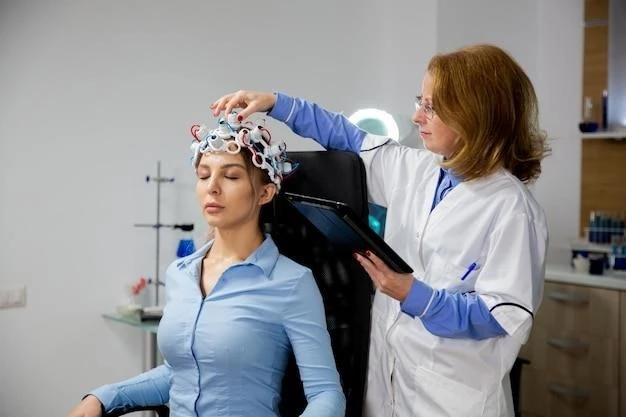Overview of Trigeminal Neuralgia
Trigeminal neuralgia, also known as Fothergill disease or tic douloureux, is a long-term pain disorder affecting the trigeminal nerve, responsible for facial sensations and motor functions․
Definition and Types
Trigeminal neuralgia, also known as tic douloureux, is a chronic pain disorder affecting the trigeminal nerve, responsible for facial sensations and motor functions․ There are two main types of trigeminal neuralgia⁚ typical and atypical․
Symptoms and Diagnosis
Trigeminal neuralgia presents as sudden, severe facial pain lasting between a few seconds to about 2 minutes٫ often triggered by light facial touches․ The diagnosis involves evaluating the patient’s medical history٫ conducting a physical exam٫ and may include imaging tests․
Common Symptoms
Trigeminal neuralgia manifests as sudden, severe facial pain lasting from a few seconds to about 2 minutes٫ typically triggered by activities like washing٫ eating٫ or brushing the teeth․ It can be caused by compression of the trigeminal nerve by a blood vessel․
Diagnostic Methods
Diagnosing trigeminal neuralgia involves a thorough medical history review, physical examination focusing on facial sensitivity, and may include imaging tests like MRI to rule out other conditions causing facial pain․ Doctors may perform additional tests to confirm the diagnosis and distinguish between typical and atypical trigeminal neuralgia․
Causes of Trigeminal Neuralgia
Trigeminal neuralgia is commonly caused by the compression of the trigeminal nerve by a blood vessel, leading to severe and sudden facial pain episodes․ Other potential causes may also contribute to this debilitating condition․
Neurovascular Compression
Trigeminal neuralgia often occurs due to the compression of the trigeminal nerve by nearby blood vessels, leading to debilitating facial pain․ This neurovascular conflict is a key factor in the development of this condition․
Other Possible Causes
Aside from neurovascular compression, other potential causes of trigeminal neuralgia include multiple sclerosis, nerve injuries, or pressure on the trigeminal nerve from various factors․ Understanding these alternative causes is crucial for accurate diagnosis and appropriate management of the condition․
Risk Factors and Complications
Trigeminal neuralgia, characterized by intense facial pain, may be triggered by routine actions like brushing teeth, and can worsen progressively if left untreated․ Severe pain episodes can significantly impact the quality of life․
Factors that Increase Risk
Trigeminal neuralgia, characterized by sudden and severe facial pain, can be triggered by routine activities like brushing teeth, eating, or light touches on the face․ Left untreated, the condition can lead to worsening pain and increased disability․
Potential Complications
Trigeminal neuralgia’s intense facial pain episodes can be severely debilitating and impact daily activities․ If left untreated, complications may include weight loss, difficulty sleeping, depression, and decreased quality of life due to the constant pain interruptions․
Trigeminal neuralgia, characterized by sudden, severe facial pain often triggered by routine activities, can be managed with medication and surgical interventions to control pain intensity and improve quality of life for patients․

Treatment Options
Management of trigeminal neuralgia involves medication such as anticonvulsants to reduce pain frequency and severity․ Surgical treatments like microvascular decompression seek to relieve nerve compression, providing long-term pain relief for patients;
Surgical Interventions
For cases of trigeminal neuralgia that do not respond well to medications, surgical interventions like microvascular decompression or gamma knife radiosurgery may be recommended․ These procedures aim to alleviate nerve compression and reduce the frequency and intensity of pain episodes․
Management and Lifestyle Changes
Management of trigeminal neuralgia involves various pain management strategies and lifestyle adjustments aimed at reducing triggers and improving overall well-being․ Implementing specific diet and nutrition recommendations can also support individuals in managing this debilitating condition․
Pain Management Strategies
Effective pain management strategies are crucial for individuals with trigeminal neuralgia․ These may include medications like anticonvulsants, nerve blocks, and complementary therapies to alleviate pain intensity and improve overall quality of life for patients․
Diet and Nutrition Recommendations
Diet and nutrition play a crucial role in managing trigeminal neuralgia․ Certain foods may act as triggers for pain episodes, so individuals are advised to maintain a balanced diet, avoid potential triggers, and stay hydrated to support overall health and reduce the likelihood of pain episodes․

Prognosis and Outlook
Trigeminal neuralgia, characterized by sudden, severe facial pain often triggered by routine activities, can severely impact an individual’s quality of life․ Proper management and treatment can help alleviate pain episodes and improve overall well-being for patients․
Long-Term Prognosis
Trigeminal neuralgia, characterized by sudden, severe facial pain often triggered by routine activities, can leave individuals struggling with the ongoing challenges of managing pain․ Engaging in effective treatment and lifestyle modifications can play a crucial role in improving the long-term outlook for those affected by this debilitating condition․
Impact on Quality of Life
Trigeminal neuralgia’s intense and recurrent facial pain can significantly impair daily activities and lead to depression, anxiety, and social isolation, affecting one’s quality of life․ Effective management and support are essential to mitigate the emotional and social impact of this debilitating condition on patients․
Research and Advancements
Ongoing research focuses on understanding the underlying mechanisms of trigeminal neuralgia and exploring emerging treatments to improve pain management and quality of life for individuals affected by this debilitating condition․
Current Studies on Trigeminal Neuralgia
Research studies are investigating the underlying mechanisms of trigeminal neuralgia to enhance pain management strategies and improve the quality of life for individuals battling this condition․ Stay informed about the latest advancements in the field to benefit from new treatments and technologies․
Emerging Treatments and Technologies
Ongoing advancements in the field of trigeminal neuralgia are exploring innovative treatments and technologies to enhance pain management and improve the quality of life for individuals suffering from this challenging condition․ Stay informed about the latest developments to access potential new avenues for treating trigeminal neuralgia․
